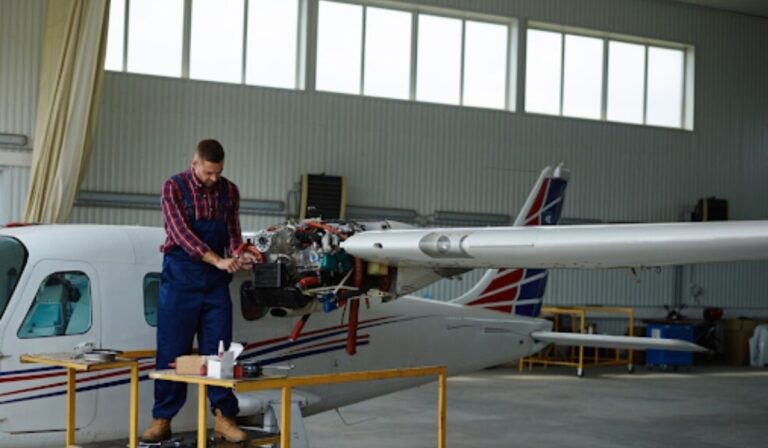Aviation, while a marvel of human ingenuity, is inherently risky. Unfavorable weather conditions, mechanical failures, human error, and other factors can pose significant threats to flight safety. Effective risk management is therefore not just an option but a necessity for aircraft owners. This article delves into the critical aspects of aviation risk management, providing practical insights, strategies to safeguard your aircraft and its occupants, and why protective aircraft insurance is a must-have.
Understanding Risk Management in Aviation
Risk management in aviation is a systematic process of identifying, assessing, and controlling hazards to aviation operations. It involves anticipating potential risks, evaluating their impact, and implementing measures to mitigate or eliminate them.
Importance for Aircraft Owners
For aircraft owners, effective risk management is paramount. It not only enhances safety but also protects your investment. By proactively addressing potential hazards, you reduce the likelihood of accidents, minimize insurance costs, and optimize operational efficiency.
Key Risk Management Strategies
Regular Maintenance and Inspections
Consistent and meticulous aircraft maintenance is the cornerstone of safety. Adhering to manufacturer-recommended maintenance schedules is crucial. Regular inspections, including annual, hourly, and pre-flight checks, help identify and rectify potential issues before they escalate. Partnering with a reputable maintenance provider is essential.
Pilot Training and Proficiency
A skilled and well-trained pilot is a vital component of flight safety. Ensure your pilots possess the necessary certifications and undergo recurrent training to stay proficient. Regular flight reviews and simulator sessions can enhance situational awareness and decision-making abilities.
Safety Protocols and Procedures
Establishing clear safety protocols and procedures is essential. Develop standard operating procedures (SOPs) for various flight scenarios and conduct regular safety briefings. Emergency drills can help prepare your crew for unexpected situations.
Flight Planning and Operational Procedures
Meticulous flight planning is a fundamental aspect of risk management. Consider factors such as weather, air traffic, alternate airports, and fuel requirements. Adhering to operational procedures, including checklists and communication protocols, reduces the margin for error.
Risk Assessment and Management
Regularly assess your flight operations for potential hazards. Identify risks, evaluate their likelihood and impact, and implement appropriate mitigation strategies. Tools like hazard analysis and risk assessment matrices can be helpful.
Emergency Preparedness and Response
Prepare for emergencies by having emergency equipment on board and developing contingency plans. Conduct regular emergency drills to ensure your crew is prepared to respond effectively.
Record Keeping and Documentation
Maintain accurate and detailed records of maintenance, inspections, training, and flight operations. Comprehensive documentation is essential for compliance, insurance purposes, and incident investigation.
Impact of Technology on Risk Management
Advanced Avionics and Safety Systems
Modern avionics have significantly enhanced flight safety. Features like weather radar, terrain awareness warning systems, and autopilot systems provide pilots with critical information and assistance.
Data Analytics and Flight Monitoring
Leveraging data analytics can help identify trends and patterns, enabling proactive risk management. Flight monitoring systems provide real-time data on aircraft performance and can help detect anomalies.
Insurance Considerations for Risk Management
Choosing the Right Aircraft Insurance
Selecting appropriate aircraft insurance is crucial. Consider factors such as aircraft value, type of flying, and coverage options. A comprehensive policy that includes hull, liability, and passenger coverage is essential.
Managing Insurance Costs Through Risk Reduction
Effective risk management can lead to lower insurance premiums. By implementing safety measures and maintaining a clean flight record, you demonstrate to insurers that you are a low-risk client.
Legal and Regulatory Compliance
Understanding Aviation Regulations
Stay informed about aviation regulations, both national and international. Compliance with these regulations is essential for safe operations and avoiding legal issues.
Ensuring Compliance
Implement systems and procedures to ensure ongoing compliance. Regularly review regulations and update your operations as needed.
Final Thoughts
Effective risk management is a continuous process that requires commitment from aircraft owners and their teams. By implementing the strategies outlined in this article, you can significantly enhance flight safety, protect your investment, and build a culture of safety within your aviation operations. Remember, safety is not a destination but a journey.
km.electric is your go-to security expert, regardless of the size of your home or business. We specialise in crafting tailored security solutions that meet your specific needs, complete with professional installation and comprehensive training.
Our extensive range of security devices and services includes cutting-edge alarms, round-the-clock monitoring, reliable smoke detectors, and personal alarms designed to safeguard your property and loved ones. As Sydney’s premier security specialists, we’re committed to providing unparalleled protection.
Whether you’re a small business owner or a large enterprise, km.electric has the expertise to fortify your premises and ensure the safety of your employees.
For personalised security solutions, contact Ken directly at 0405 83 83 83.

